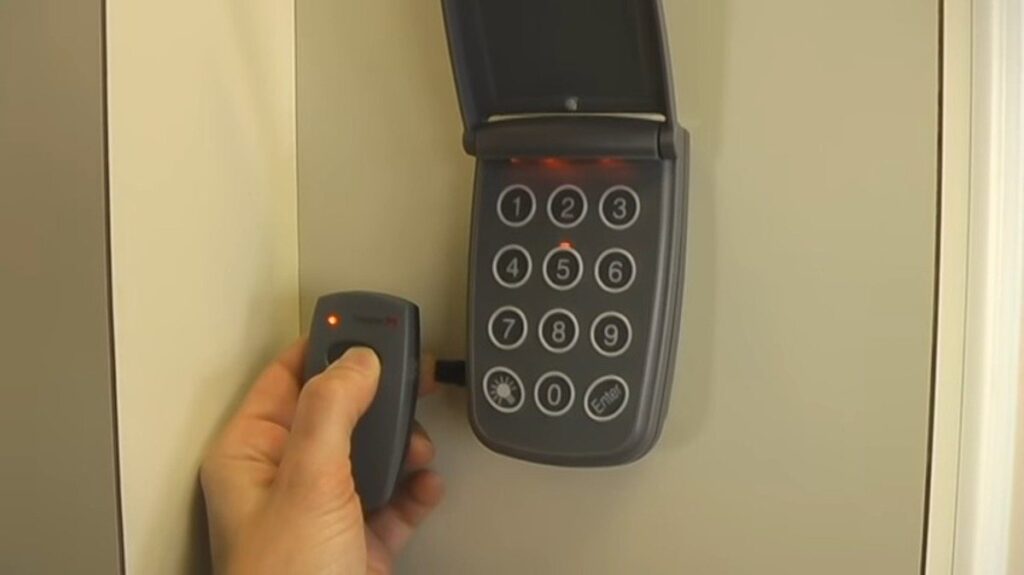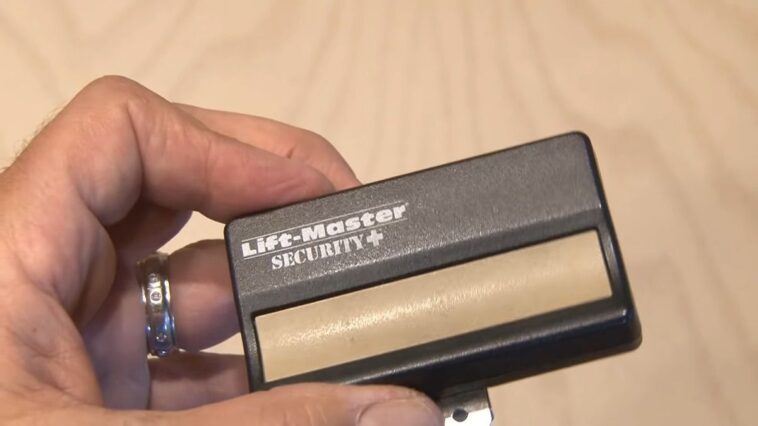Affiliate Disclosure: We may earn money or products from the companies mentioned in this post.
Your garage door is a critical entry point to your home, and ensuring its security is paramount. While traditional garage door sensors exist, the integration of a Ring sensor can elevate your security system to a whole new level. But the question remains: can you put a Ring sensor on your garage door?
While not technically designed for garage doors, Ring sensors can be easily adapted to monitor their open/closed status, offering valuable peace of mind and convenient automation.
Can Garage Door Keypads Be Hacked?
Garage door keypads, while convenient, are not immune to hacking risks. Various vulnerabilities exist that could potentially compromise their security. Common hacking methods include brute force attacks, where hackers systematically try different combinations until they find the correct code, and code grabbing, which involves intercepting and decoding the wireless signals transmitted between the keypad and the garage door opener.
Additionally, some older models may have outdated encryption or lack advanced security features, making them more susceptible to hacking attempts. To mitigate these risks, homeowners are advised to update to newer keypad models with improved encryption protocols and stronger security measures. Regularly changing access codes, using longer and more complex codes, and ensuring the keypad firmware is up-to-date are essential steps to enhance security.
Common Garage Door Keypads Hacking Methods
Garage door keypads, while providing convenient access to your home, are not immune to potential hacking threats. Understanding common hacking methods is crucial for homeowners looking to bolster the security of their garage entry points.
1. Brute Force Attacks
One of the primary methods employed by hackers is the brute force attack. In this approach, malicious actors systematically try different combinations of numbers until they find the correct access code.
While modern keypads often have features that prevent rapid consecutive attempts, some older models may be more susceptible to this method. Homeowners are advised to use longer and more complex codes to mitigate the risk of brute-force attacks.
2. Code Grabbing
Code grabbing involves intercepting and decoding the wireless signals transmitted between the garage door keypad and the door opener. Some keypads use radio frequency signals, and if these signals are not adequately encrypted, they can be intercepted by individuals with malicious intent.
Hackers may use specialized equipment to capture and decipher these codes, gaining unauthorized access to the garage. To enhance security, homeowners should opt for keypads with advanced encryption features that make code grabbing more challenging.
3. Remote Hacking
With the proliferation of smart home technology, some garage door keypads are integrated with wireless connectivity features. While this allows for convenient remote access, it also introduces the risk of remote hacking.
Cybercriminals may exploit vulnerabilities in the keypad’s software or network connections to gain unauthorized access from a distance. Regularly updating the keypad’s firmware and ensuring strong, unique passwords for any associated accounts can help protect against remote hacking attempts.
4. Signal Jamming
Another method involves the use of signal-jamming devices. These devices interfere with the communication between the garage door keypad and the door opener, preventing the correct code from being transmitted.
While this method doesn’t necessarily reveal the access code, it can still allow unauthorized entry. Homeowners can counteract signal jamming by installing keypads with anti-jamming features or opting for dual-frequency systems that can operate on multiple frequencies.
Best Practices For Securing Garage Door Keypads
As smart home technology advances, the integration of garage door keypads has become a popular choice for homeowners seeking both convenience and security.
However, the rise in cyber threats necessitates a closer look at best practices for securing garage door keypads
1. Choose Advanced Encryption
To thwart brute force attacks and code-grabbing attempts, opt for garage door keypads equipped with advanced encryption protocols.
The Chamberlain KLIK2U Clicker Keypad is a reliable option with robust security features, including rolling code technology that generates a new code each time the keypad is used.
2. Update Firmware Regularly
Manufacturers often release firmware updates to address security vulnerabilities. Ensure your garage door keypad’s firmware is up-to-date by checking for and installing the latest updates.
The Genie GK-R Intellicode2 Wireless Keypad is known for prompt firmware updates, enhancing its resistance to potential exploits.
3. Implement Long and Complex Access Codes
Strengthen your keypad’s security by using long and complex access codes. Avoid easily guessable codes like birthdays or sequential numbers.
The LiftMaster 877MAX Wireless Garage Door Opener Keypad allows users to create four-digit PINs and features anti-code theft technology for added protection.
4. Enable Two-Factor Authentication
Some advanced garage door keypads offer two-factor authentication for an extra layer of security.
The Craftsman CMXZDCG453 Wireless Keypad supports two-factor authentication, requiring users to input a secondary code after the primary access code, enhancing overall security.
5. Install Anti-Jamming Systems
Protect your garage door keypad against signal-jamming devices by choosing keypads with anti-jamming features.
The Skylink KN-318 Wireless Keyless Entry System is equipped with anti-jamming technology, ensuring reliable communication between the keypad and the garage door opener.
6. Regularly Change Access Codes
Frequently changing access codes is a simple yet effective practice to enhance security.
The Overhead Door Wireless Garage Door Opener Keypad allows users to easily reprogram access codes, providing flexibility and security.
How Users Can Check And Update The Firmware On Their Garage Door Keypads

Garage door keypads have become integral components of our daily lives, offering convenience and security.
However, to maximize the security features of your keypad, it’s essential to understand how to check and update its firmware regularly.
1. Understand the Importance of Firmware Updates
Firmware serves as the operating system for your garage door keypad, controlling its functionalities and security features. Regular updates often include patches for vulnerabilities identified by manufacturers or security researchers.
By keeping the firmware up-to-date, you ensure that your keypad remains resilient against potential exploits.
2. Identify Your Garage Door Keypad Model
Different garage door keypads have unique methods for firmware updates. Identify the specific model of your keypad, which is usually indicated in the product documentation or on the device itself. Knowing your model is crucial for finding the correct firmware and update instructions.
3. Visit the Manufacturer’s Website
Navigate to the official website of the manufacturer that produced your garage door keypad. Most reputable manufacturers provide firmware updates and related information on their websites.
Look for a dedicated support or downloads section where firmware updates are typically available for download.
4. Locate Firmware Updates and Documentation
Once on the manufacturer’s website, search for the firmware updates related to your specific keypad model.
Manufacturers often provide detailed documentation accompanying the firmware files, offering instructions on the update process and any prerequisites.
5. Follow Step-by-Step Instructions
Carefully read and follow the step-by-step instructions provided by the manufacturer. These instructions typically include guidance on downloading the firmware, preparing your keypad for the update, and executing the update process. Ensure you understand each step before proceeding.
6. Use Manufacturer-Specific Tools or Apps
Some manufacturers provide dedicated tools or apps to facilitate the firmware update process.
These tools may offer a more user-friendly experience and guide you through the update seamlessly. Check the manufacturer’s website or user manual for information on any available tools.
7. Test Your Keypad After the Update
Once the firmware update is complete, test your garage door keypad to ensure all functions are working correctly.
Verify that access codes, security features, and any additional functionalities are operational. This step ensures that the update has been successful and that your keypad remains secure.
What Are The Common Signs That My Garage Door Keypad May Have Been Hacked?
If you suspect that your garage door keypad may have been hacked, it’s essential to be vigilant and recognize common signs of unauthorized access.
Here are some key indicators that could suggest a potential security breach:
1. Unexpected Openings
One of the most evident signs is if your garage door opens unexpectedly, especially when you haven’t initiated the action.
If you notice the door operating on its own or at unusual times, it could indicate that someone has gained unauthorized access to your keypad.
2. Malfunctions and Glitches
Anomalies in the functioning of your garage door keypads, such as unresponsive buttons, delays in indoor operation, or erratic behaviour, may be indicative of a security compromise.
Hackers may tamper with the keypad’s programming, leading to these malfunctions.
3. Unfamiliar Codes or Entries
If you observe unfamiliar access codes programmed into your garage door keypad or notice entries in the system log that you didn’t authorize, it’s a clear red flag.
Hackers often change access codes to maintain control over the compromised system.
4. Inconsistent Keypad Behavior
A hacked garage door keypad may exhibit inconsistent behaviour, such as accepting incorrect codes or rejecting valid ones.
If you experience difficulties in entering your usual access code or notice that the keypad behaves differently than usual, it warrants immediate investigation.
5. Strange Noises or Activity
Listen for unusual sounds from your garage door opener, such as repeated attempts to open or close without apparent reason.
Additionally, if you observe any suspicious activity around your garage, it’s essential to investigate further.
7 Best Wall Mounted Fan For Garage Gym
Best Garage Door Companies In Ottawa


